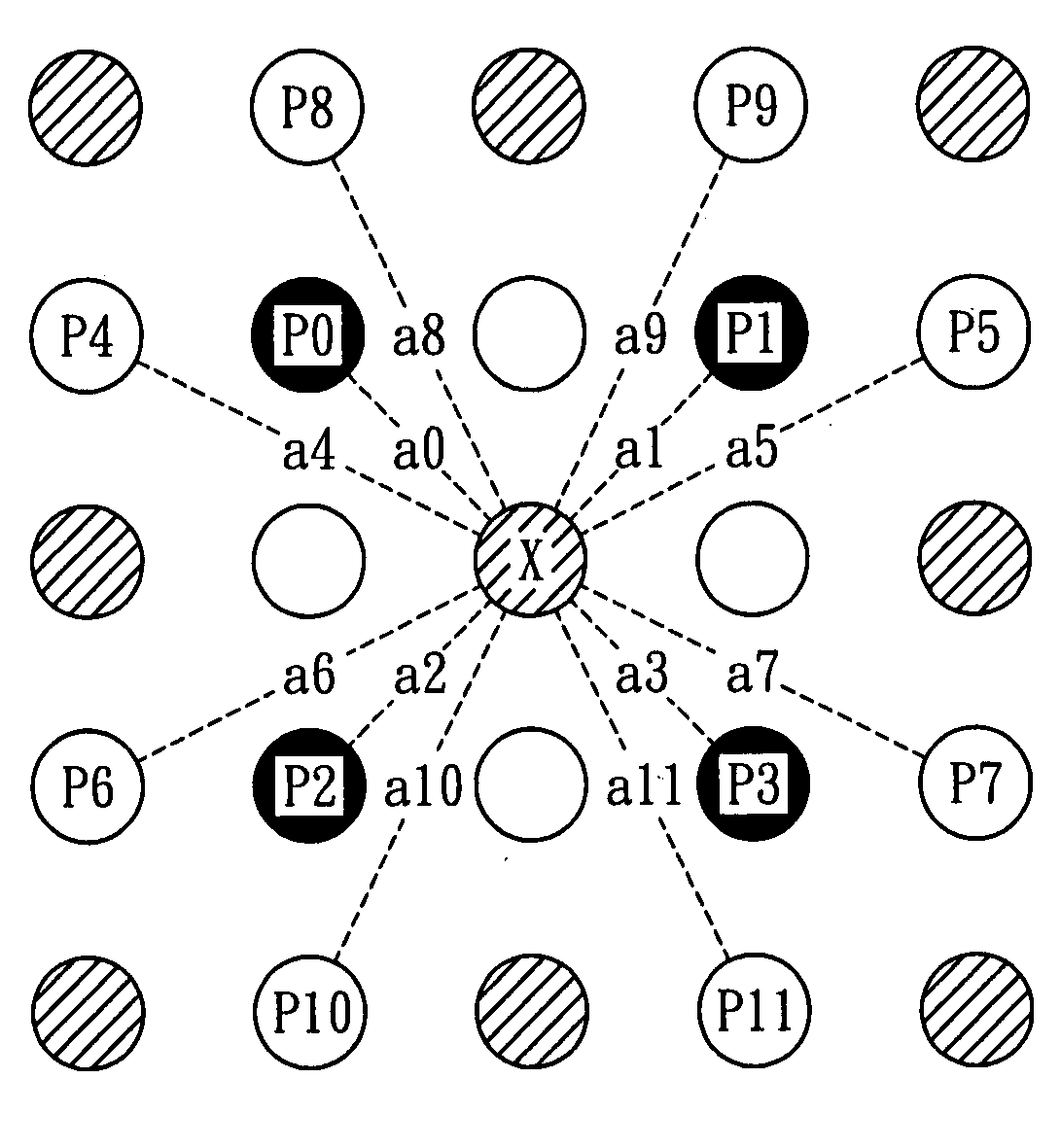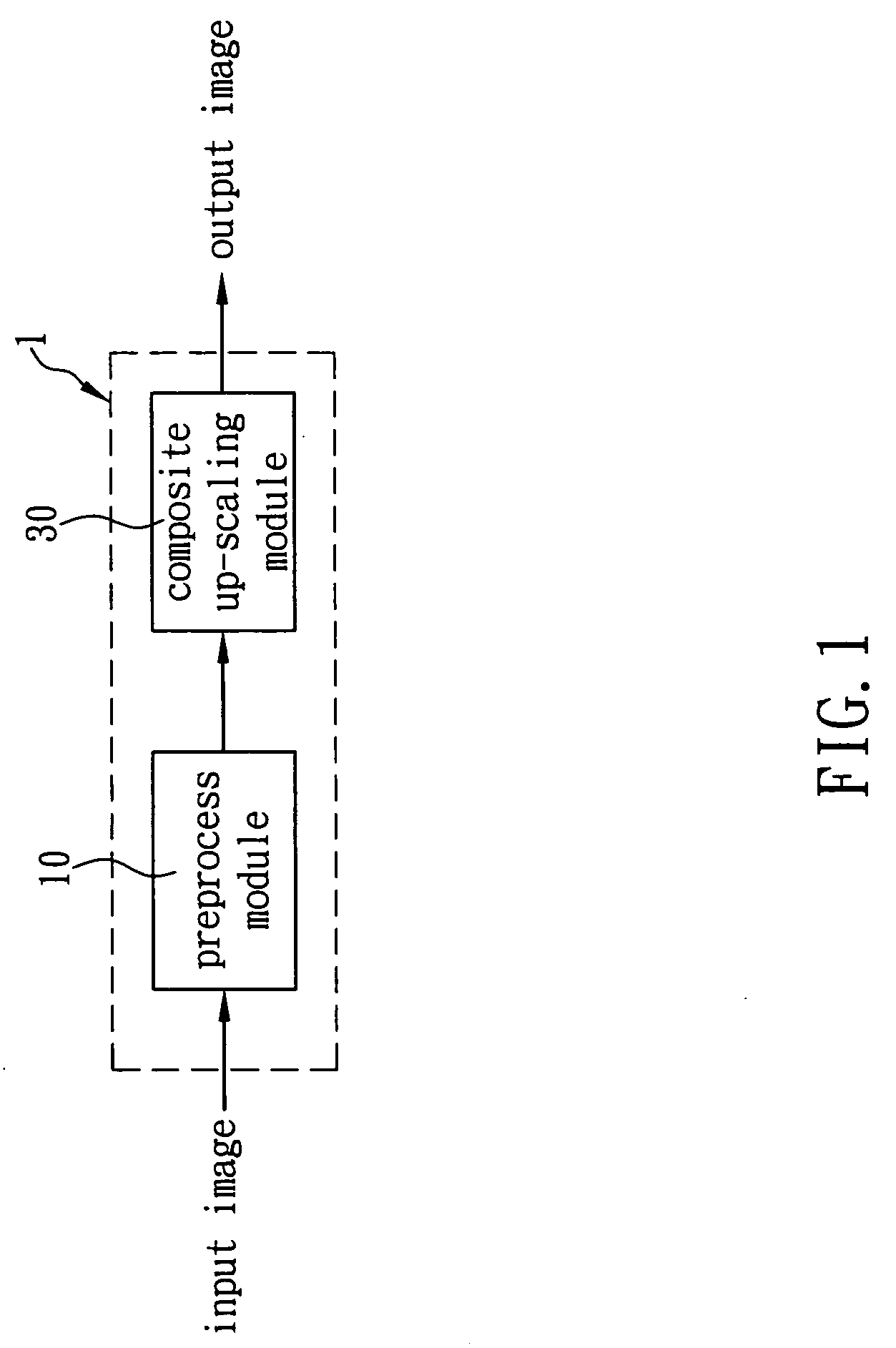Method for magnifying images and videos
a technology applied in the field of magnifying images and videos, can solve the problems of incorrect interpolation, blocky edge effect, loss of details, blurry edges, etc., and achieve the effect of preventing the generation of incorrect ghost points, enhancing the robustness of directional interpolation, and improving clarity
- Summary
- Abstract
- Description
- Claims
- Application Information
AI Technical Summary
Benefits of technology
Problems solved by technology
Method used
Image
Examples
Embodiment Construction
[0022]Referring now to FIG. 1 in which a method for magnifying images and videos according to the present invention is illustrated, the method is applicable to an image processing device 1 so that the image processing device 1 can output a magnified digital image according to a predetermined magnification ratio after a digital image is input into the image processing device 1. Thus, when a low-resolution input image and video are magnified and shown on a high-resolution video-frequency apparatus, a clear digital image can be displayed to facilitate identification of characteristics shown in the image. In a preferred embodiment of the present invention, as shown in FIG. 1, the method includes the steps of providing a preprocess module 10 and providing a composite up-scaling module 30. Referring now to FIG. 2, the preprocess module 10 executes a high-pass filtering process 11 on an input image so as to extract a high-frequency portion of the input image, wherein the high-frequency por...
PUM
 Login to View More
Login to View More Abstract
Description
Claims
Application Information
 Login to View More
Login to View More - R&D
- Intellectual Property
- Life Sciences
- Materials
- Tech Scout
- Unparalleled Data Quality
- Higher Quality Content
- 60% Fewer Hallucinations
Browse by: Latest US Patents, China's latest patents, Technical Efficacy Thesaurus, Application Domain, Technology Topic, Popular Technical Reports.
© 2025 PatSnap. All rights reserved.Legal|Privacy policy|Modern Slavery Act Transparency Statement|Sitemap|About US| Contact US: help@patsnap.com



